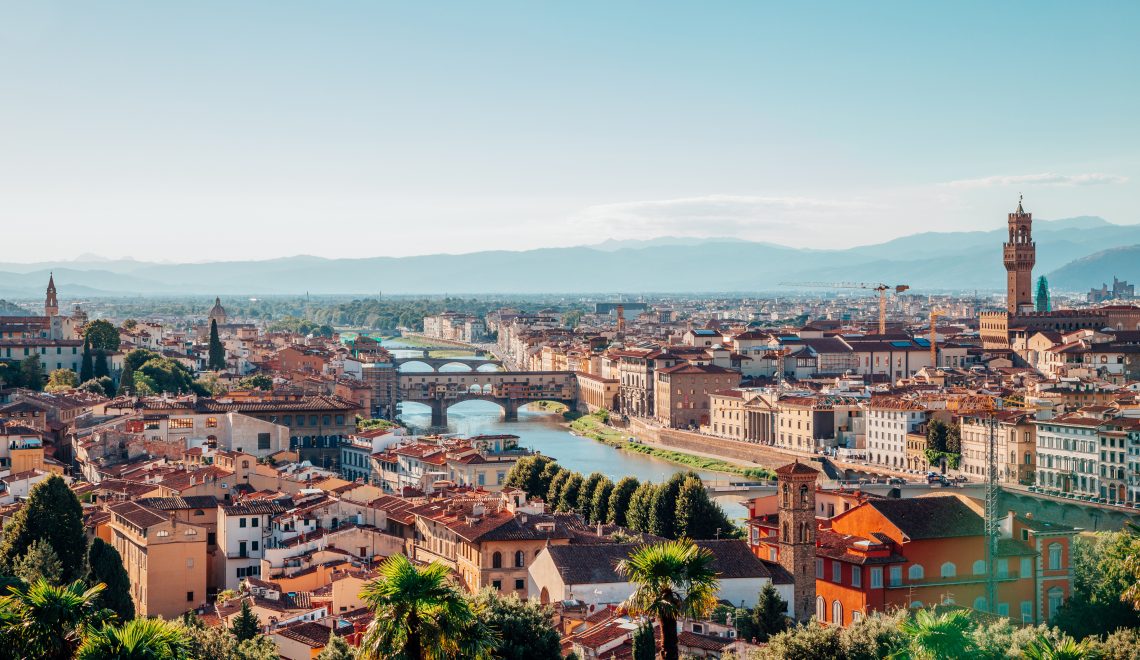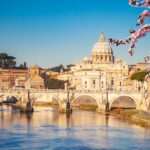
From the ancient buildings of the historic center to the futuristic design of the Le Albere district: here is the perfect itinerary for visiting Trento in two days!
Built in Roman times and immersed in the breathtaking landscapes of its beautiful region, Trento is not just for lovers of hiking and trekking in the mountains!
If you have already enjoyed its Christmas Markets, in two days, you will fall in love with its fascinating architectural and cultural heritage, ranging from the Renaissance palaces of the historic center to the modernity of the Albere district designed by Renzo Piano. Discover how to experience the city in two days with our itinerary!
First day: walking through the historic center
Ancient stately buildings, churches on every corner, and quaint alleys – you need only stroll through Trento’s historic center to be absorbed by its elegant, history-laden atmosphere.
In Piazza Duomo, to this day the hub of city life, stands the Cathedral of St. Vigilius, whose construction began in the 1200s and was completed a hundred years later: although the different architectural styles are perfectly blended, an “expert eye” will be able to notice the difference between the area reserved for the altar, which has a square layout typical of 13th-century architecture, and the nave, characterized by very high rectangular bays typical of the next century.

Once out of the Cathedral, turn to look at the rose window on the northern facade, which, with its twelve rays, represents the Wheel of Fortune and reminds us that people’s fortunes can change from one day to the next!
Piazza Duomo also hosts Palazzo Pretorio, also known as the Palazzo Vescovile because it was the residence of the Bishops of Trento in medieval times. Built at the beginning of the 13th century on the remains of two earlier churches, it has recently returned to its original splendor thanks to a major restoration and, since the 1960s, has been home to the prestigious Tridentine Diocesan Museum in memory of the famous Council held in the city.
Right next to the Museum stands the Civic Tower, which, during the Council of Trent and on the occasion of the passage of great public figures, was festively illuminated, complete with fireworks.
Initially owned by the episcopate, it later became municipal property and was also used as a city prison. More than forty meters high, the Tower is now open to the public: don’t be intimidated by its 156 steps, once you get to the top the scenery will be sensational!
Second day: Buonconsiglio Castle, Le Albere and the MUSE
Although you will find it difficult to tear yourself away from the historic center, we recommend that you devote the second day to discovering equally worthwhile places.

This is the case with the Buonconsiglio Castle, the most important monumental complex in the entire region. Slightly elevated above the rest of the city, Buonconsiglio Castle encloses within its walls many buildings from different periods: from the very ancient Castelvecchio, built in the first half of the 13th century, to the 17th-century Giunta Albertiana, in a typically Baroque style. As is often the case, over the centuries, the Castle has been used for a wide variety of activities: from bishop’s residence to administrative building, from barracks to museum venue.
On the other side of the city rises a place with a decidedly different soul, and that is precisely why it is worth a visit: it is the Le Albere district, designed and built by Renzo Piano. Rising from the ashes of the former Michelin factory, it claims a high level of sustainability thanks to the use of energy-saving insulation materials and the five hectares of parkland in which it is set.

©Archivio MUSE Museo delle Scienze – ph. Roberto Nova
The Le Albere district also contains the MUSE , the Science Museum designed by Renzo Piano himself, which guarantees the visitor a truly extraordinary experience: the shape of the building is, in fact, inspired by the slopes of the mountains, and the exhibition itinerary winds from the basement, with the wonders of the tropical greenhouse, to the terrace, which houses geological features of the alpine environment. If you are in Trento with children, it is a must!
Before leaving again: a wine tasting in the cellar

© Archivio Cantine Ferrari Trento
Before returning home, you cannot miss a tasting of white and sparkling wines typical of the territory. Many wineries offer ad hoc tours and tastings, such as the famous Cantina Ferrari, which produces renowned bottles that are in no way inferior to French champagnes.
A historic brand of Trentino’s winemaking tradition, Cantina Pedrotti has been enriching the surrounding area with its production for generations and offers visitors various guided tours of its Grotta dello Spumante.

© Cantina Sociale di Trento
Founded in the mid-1950s to bring small producers together, Trento’s Cantina Sociale is committed to defending and promoting local excellence. At the wine shop, you can sample various types of Trentino wines, each with a very specific identity: whites, reds, rosés, the famous Trentodoc sparkling wine, and some grappas.
Travel to Trento with Italo
Reaching Trento by train has never been easier thanks to Italo connections with many Italian cities. For example, did you know that it takes only two and a half hours to get to Trento from Florence.







